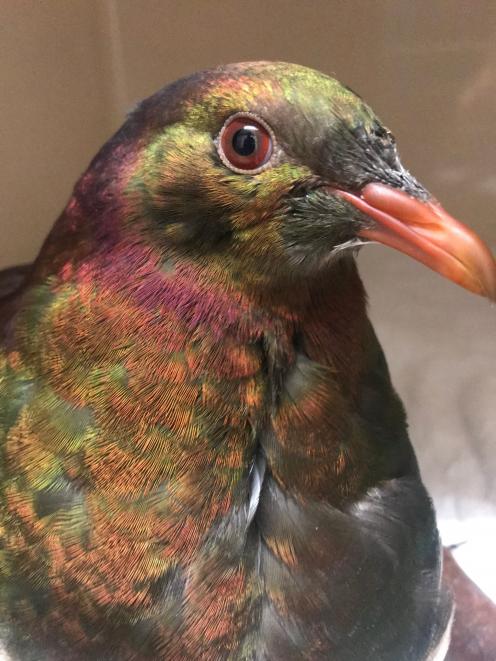
Quiet creatures by nature, kereru have generally earned an excellent reputation for being good patients in the hospital. That said, there are exceptions to every rule, and our current host of these chunky birds proves both sides of it.
As we creep slowly towards spring, kereru pairs are starting to move back into urban areas that may not have had enough fodder to support them during the winter.
Soon it will be breeding season, and seeing pairs flying overhead swooping low and diving is a common sight across Otago as the birds locate their preferred nesting sites.
The low swooping can have some unintended consequences, however, and some that land these native seed-spreaders in the hospital all too often.
Window strike remains the most common reason the Wildlife Hospital admits kereru for treatment.
Of our 17 wood pigeon patients in the last month, eight were known to have struck windows, and a further three are strongly suspected to havedone so.
This typically results in injuries to the chest and shoulder area, which takes the most impact from hitting windows.
Small decals for your windows that help prevent bird strike can be purchased from Dunedin’s own Project Kereru (projectkereru.org).
Vehicle strike is another issue, which is probably just as surprising for unsuspecting motorists as it is for the kereru. This can mean catastrophic injuries for the bird if they’ve taken a big impact.
Highly underrated in the personality department, we think these birds are actually quite charismatic.
Some are total chowhounds, wolfing down every last morsel of kereru mix and expecting more.
Others prefer the full-service experience and expect the vet team to take care of everything, including tube feeding, so they don’t have to get their beaks dirty.
We’ve had a few juveniles in their awkward stage, and some who clamour for all the attention, even sticking their heads out of their enclosures and bobbing up and down, more like a parrot than a pigeon.
The passive type, like a current patient from Taieri Mouth, can lull us into a false sense of security on daily rounds, and allow the tricksters like our Port Chalmers representative to get the better of us when they sneak past the enclosure door and have a romp in the ward.
They may be injured, but none of these cheeky natives have lost their sense of individuality, and we love them all the more for it.
By Jordana Whyte
Wildlife Hospital Trust manager








